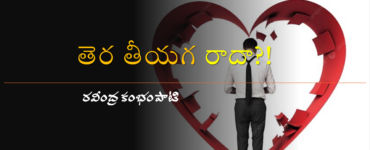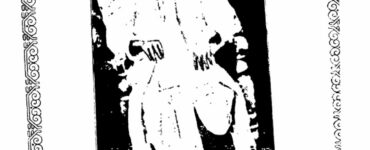Movies have become a part of our life. I am one person who grew up watching films and still possess the same childish enthusiasm towards films. I enjoy reading books written on films even today. World cinema has enlightened me with various technological aspects and ideologies but for me Hindi movies always come first. Old Hindi films and songs remain my best friends even today. My interest in the old classics has introduced me to a lot of film lovers and historians and my journey till date with them has been extremely beautiful. I have read a lot of books on Hindi films but this one titled “Melodies, Movies and Memories” remains my favorite.
Authored by Nalin Shah, this book takes us into the bygone golden era of Hindi films and introduces us to various aspects of Hindi films. We come to know about the legends of Hindi cinema and their contribution through first hand experiences shared by Nalin Shah. Nalin shah has enjoyed Hindi film music right from the travelling cinema days. He proudly says that this passion led him to learn classical music, master the Urdu language, collect vintage records and also travel around the country to meet the music composers, singers and technicians concerned with the film world. He is acknowledged as a leading authority on the history of Hindi film music and his articles on various subjects related to films and its music have been compiled and published in the form of this book.
Nalin Shah dedicates this book to Har Mandir Singh ‘Hamraaz” the compiler of Hindi film Geet Kosh, making this book, a tribute to a film music lover from another. Nalin Shah was so obsessed with Hindi film music that he found ways and means to meet people who were close to the singers and actors of the golden era, gaining information and understanding the effort made by those artists to produce the memorable songs he always admired. He says Paul, KL Saigal’s driver was his best source of information about the legendary singer. He endured many hardships to just meet people who know the film legends and helped him to have long talks with them. He had long conversations with OP Nayyar, Bulo C Rani , C Ramchandra, and Anil Biswas to know about their work . He was friends with Raj kumari, Zohrabai, Qamar Jalalabadi, Majrooh Sultanpuri and Pradeep. He had seen the one time worshipped legends struggle financially, living troubled lonely lives. Known as the vintage era music researcher, this book shows Shah as an epitome of filmy knowledge when it comes to the vintage film music, Nalin shah’s passion ruled his life and choices and he did a lot of hard work to find out factual information related to film songs and artists. That is why Urvish Kothari who writes a foreword to this book calls it “The ‘Alam’ Era revisited”.
With great honesty he writes in his first essay “People like me who grew up on the music of the post-Partition era thought that the golden era of music had arrived with the arrival of Lata” After hearing Noorjahan singing “Baithi hoon teri yaad ka lekar ke sahara”, he wanted to hear more of her and then he dwelt into the past. By then his passion became an obsession and it transcended the constraints of time. He writes “It took time to discover that composers, singers and poets in earlier times had their identities which lent a distinct flavor to the songs. This discovery makes me taste the current remix-gimmicks as a murderous assault on their sacred identities by business sharks masquerading as artists. The Ganges is sacred as it flows from its source and not when it is bottled as a remix beverage”… This is exactly the reason for people like me also, to stick on to these oldies and not being able to get the same satisfaction from the present era songs. After his research which goes into the 30s, he sums up saying ‘the songs of Saigal and Kanan Devi in the 1930s are more memorable than most others that followed. He further tells that the decline of Hindi film music started in the 60s, it became barren in the 70s(with a few exceptions like Pakeezah and Umrao jaan). He writes “If I hear anything today that fascinates me as in Parineeta, 2005, I instinctively know that its roots are deeper.
In this book he writes about the pathetic plight of the widow of music director Khemchand Prakash who lived as a destitute on the streets of a Bombay suburb. She lived like a beggar and stood transfixed in the strain of “Ayega aanewala” when heard anywhere. The irrepressible stage and film actor Master Nisar begged for a loaf of bread in the last few years of life. His own song “wo muqaddar na raha, who zamana naa raha”, was re lived by him. Some singers like Zohrabai Ambalawali and Suraiya declined to sing in the later years, and to compromise with the changing scenario. Shamshad Begum felt hurt when her favorite director invited her to sing in a chorus and then happily retired. Singer Ratanbai ended up begging at the Haji Ali Dargah, Music director and singer Khan Mastana died as a beggar near Manim Darghah, Jahan Ara Kajjan died lonely, Master Parashuram who earned name in Hindi film music died as a beggar, Music director Jaidev did not have a house of his own and had to depend on music lovers in the last stages of his life. Ghulam Mohammed’s family did not get any royalty for his life’s best work in Pakeezah after his death. Shanta Hublikar a prominent actress of the 30s watched her famous film on TV after 40 years in an ashram, where she was spending her last days. Sitting in the room with her house mates, she never revealed that the heroine of the film who was being appreciated by her friends was indeed she in her younger days. Sardar Chandulal Shah a well reputed produced and the founder of Ranjit Movie tone lost his wealth in business and when he did in 1975 Raj kapoor was the only important film maker among the handful of mourners present, as his funeral had no commercial value…. This is how the land of glitters works.
Those were the days when the music composers enjoyed their importance. People like Naushad, refused to take up more than one or two films a year. They were paid less and many did not make enough money to have a comfortable life. Nalin shah writes how on Septermber 18, 1935, a mass demonstration was held by three hundred Parsis outside Bombay’s Imperial cinema objecting two young Parsi women being associated with movie business. Himansu Rai did not subject to the demands of the agitators and Saraswati Devi born as Khorshed into a Parsi family became the first woman music director to contribute substantially to the development of film music. She was the only composer to use the Jaltarang profusely. She has thirty films to her credit from 1935 to 1950. Nalin Shah writes “The increasing use of electronic instruments in music by modern tune-smiths is undermining the efficacy of rhythmic instruments such as tabla, mridung and dholak. And that is the reason why music has lost its inherent charm. Those days classical music and the mastery of this form was appreciated. Folk music also had its influence in Hindi songs. Nalin Shah questions the new generation, “If originality is a myth then how do we explain the contradiction that present day musical pieces are forgotten as fast as they become popular”?. Naushad once said that a music director, while yielding to public preference, must also try to inculcate an aesthetic sense in the minds of listeners. The composers of those days were ingenious enough to maintain the precarious balance between art and mass appeal. That makes those songs timeless. There was so much of brain storming done by the music directors while choosing their singers. That was the reason why every song appears fresh and apt even today. Nalin Shah writes “Its not surprising that vintage music has a long life and that the music which is rehashed and recycled today is forgotten as fast as it becomes popular. And that precisely is the difference between the composer by choice and the composer by chance – one depends on talent and the other on destiny.
Those were the days when the singer’s names were not officially acknowledged as it was not considered necessary. Some composers and singers had different names on their released records due to obligatory signed contracts and therefore many wonderful compositions are left un credited. Many singers and composers lost their careers to alcoholism. Music Director Vinod, Shyam Sunder, Singer K.L.Saigal, Geeta Dutt, Poet Qamar Jalalabadi died very early, due to their alcoholism which was treated as a compulsory intellectual addiction in a few circles.
Hindi music has witnessed directors like Bappi Lahiri who had worked for 200 films in a span of 12 years while there was Naushad who did just 79 films in 57 years. RC Boral who is regarded as the most significant composer ever, by masters like Naushad and Anil Biswas along with the author too feel sad that his name remains unknown to many music directors of today. Stars of those days displayed tantrums but the actors were not considered as important as the film and music directors, and that made all the difference. Nalin Shah in an article mentions that Lata Mangeshkar cannot be made in this era because it was the circumstances which made her a legend. Nalin shah writes. If Lata was born 30 years later, what would she have sung ? The songs would have been forgotten as fast as they become popular. And that would not have made a Lata Mangeshkar. Can all the circumstance, adverse and favorable, and the opportunities in the form of creative composers and poets, ever be repeated together in a singer’s life ? IF not, when and how can there be another Lata Mangeeshkar? He also says that it did good to Noorjahan to migrate to Pakistan and it also helped Lata to become the singing legend of India. Speaking about the trend of Shraddanjali where a singer sings the songs sung by a senior he says, “singing other artistes’ songs by way of anjali is a gimmick which no singer, however great, should indulge in, mainly because the composers then had created the tunes with some other voices in mind.
Talking about the bygone days of those singers, Nalin shah clearly speaks about the competitive world and how singers lost their careers to their competitors when their own friends preferred the market choice over them, O P Nayyar neglected Geeta dutt over Asha bhonsle, Talat died in seclusion, When well known singer CH Atma, the man who is praised for his song “preetam aan milo”, was offered flowers at a function he wailed loudly saying “I need work, not flowers”. Some composers were forgotten before they actually died and left this world heart broken.
Nalin Shah talks about DN Madhok who gave respectability to the profession of writing before Sahir Ludhianvi raised his voice. He was the first film lyricist who wrote in the language of masses. Even in 1940s this versatile genius was paid Rs. 10,000 per song. Madhok the lyricist was so famous that he recommended Naushad the music director to Chadulal Shah and saw that his career moves on. After those days comes Majrooh Sultanpouri, a Phalke awardee, in his 79th year of life who was abused and threatened by the producer of the film when he criticized the song “Aati kya khandala”. This is how the position of lyricists in Hindi films has fallen down. Explaining the pit fall Nalin shah writes “In 1937 when Wadia made the first song less film Naujawaan, there was loud protest from Cine-goers. They felt cheated. If such a song less film is made now, the viewers might heave a sigh of relief.
Nalin shan speaks about those days when films were made in the studios and the bond artists had with the studio crew. He also criticizes the way awards are given in the later days. “Dil apna aur preet parayi” earns an award for Shankar Jaikishan ignoring Mughal e azam. This is just one example to quote about the absurdity in film awards. Speaking about vulgarity in present day films the author reminds us “Mehboob, K. Asif, Shantaram and Bimal Roy never talked of mass appeal nor did the Chopras, Gulzar or Benegal. Ramesh Sippy and Yash Chopra were successful without being vulgar. They cared more for what people would see rather than what the people wanted to see. If the audience is fed the opium of vulgarity in doses, they will get addicted and eventually end up by asking for more. And that is the mass appeal the unscrupulous film-makers are talking about.
The book in detail talks about the different changes Hindi music has gone though from the Golden era to the present liberal era. Those were the days when a word “Chaatiya” from the line “Apni garaz se lagaaye le chhattiy”a from the song “Naa maanu Naa maanu (Ganga Jamna 1961)” was objected by the censor and had to be redubbed as “milayele akhiyan”. Now “choli ke peche” seems to be dignified when compared to many other modern day songs. Nalin shah sums up saying Today, the censors have become magnanimous enough to let others enjoy what earlier they used to enjoy amongst themselves only.
On the whole this is an informative and educative read to all those Hindi film song lovers which talks about the journey of Hindi songs from the 30s till date. It is definitely an unbiased written work where the writer logically presents his point of view on music and the music fraternity associated with films and the showbiz.
*









Add comment